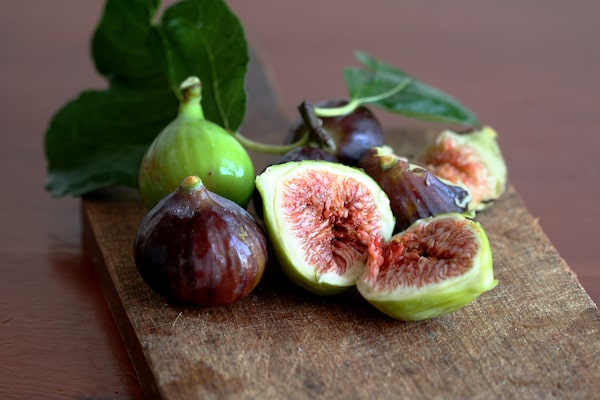
Figs come in a range of black and green varieties.Angelafoto/iStockPhoto / Getty Images
Luscious, jammy and honeyed, figs are in season through October and the dried version is a welcome addition to the pantry. They make an excellent dessert, but have savoury uses, too.
Spanish explorers brought figs to Mexico from Turkey in the 16th century. The fruit then made its way to the West Coast of the United States, where it is grown today.
Green figs are the most common, and because there are so many varieties you may not always get the sweetest ones. They are larger than black figs and the best ones have an amber- to strawberry-coloured pulp. The black variety varies in hue from black to violet to red. Some people say the black are sweeter, but again it has to do with the variety. Black mission figs, with their lighter pink interior, are the most popular and are widely grown. Both types are rich in fibre and vitamins A, B1 and B2, as well as having good mineral content.
Cooking 101: Lucy Waverman decodes cooking techniques everyone can master
Figs are picked ripe, which makes them vulnerable to splitting during transport, so they are usually packed in boxes. Store individual figs in the refrigerator, where they will they last a few days.
Look for fruit that is slightly soft to the touch with no surface breaks in the skin. Fruit with sap peeking out opposite the stem end indicates ripeness and high sugar content. Take a sniff: If there is a slight fermented smell, the figs are overripe. A heavy fig is a good sign that the interior is rich and ready.
Bring the fruits to room temperature to improve their flavour. If it’s a sunny day, leave them on the windowsill to warm, as they do in the south of France. Don’t peel them, just remove the little stem end.
You can consume them in a variety of ways. Figs are delicious baked with a little fortified wine, such as port or madeira, or with orange liqueurs; serve them with a citrus-scented whipped cream; or make a compote, instead of oranges or cherries, to serve with roast duck. They are also glorious raw on a cheese tray, and because of their high pectin content, will help to thicken low pectin fruit such as strawberries when making jam.
I love raw figs sliced in a salad, but they’re also delicious crushed on a baguette with prosciutto, or blue cheese or both. Some people prefer them pulled apart rather than sliced; it gives a more relaxed look, especially when served in a salad with milky burrata. A few toasted almonds or walnuts on the side would not go amiss. Figs muddled with some citrus juice makes an excellent base for cocktails made with rum, bourbon or vodka.
Figs also dry well and are often added to stuffing. And if you don’t give a fig about figs, you are missing a delightful treat.
Need some advice about kitchen life and entertaining? Send your questions to lwaverman@globeandmail.com.
Live your best. We have a daily Life & Arts newsletter, providing you with our latest stories on health, travel, food and culture. Sign up today.